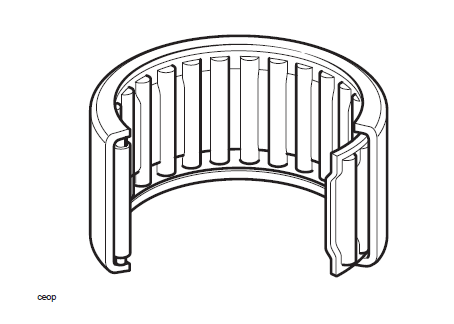 Triumph Scrambler 1200 XC - Service manual > Chassis Bearing Lubrication
Triumph Scrambler 1200 XC - Service manual > Chassis Bearing Lubrication
Note
- This information relates only to bearing lubrication. For the procedures necessary to replace a bearing, always refer to the relevant section of this Service Manual.
- Bearings installed in engine and transmission applications are not covered by this information. Refer to the Lubrication chapter or the relevant engine chapter for additional information.
General
For a bearing to be serviceable for its anticipated life span it must be checked, adjusted and lubricated at regular intervals, as specified in the service schedules given in the Owner's Handbook and this Service Manual.
A correctly lubricated bearing will have a film of lubrication that separates the moving parts, disperses heat and protects the bearing surfaces from corrosion.
Note
- In all cases, use the lubricant recommended.
- Grease the bearing, not the cavity where it is located.
- A bearing that is not regularly checked and lubricated will have a reduced life span.
New Bearings
New bearings are typically protected with an oil preservative to prevent corrosion etc.
during storage. This is NOT the lubrication for the bearing but DOES NOT need to be washed off prior to assembly and in-service lubrication.
When lubricating a new bearing with grease the following steps should be taken:
- Do not clean off the oil preservative.
- Grease must be forced between the roller elements and the roller cage.
- Rotate the bearing to ensure that the grease is distributed over the entire circumference of the internal parts.
- Any excess grease should be smeared on the outside of the rollers.
Lubrication and Checks While Servicing a Bearing
- Disassemble parts as necessary to access the bearing.
- Inspect the old grease covering the bearing, looking for signs of bearing damage, i.e. flakes or specks of metal.
- Remove the old grease.
- Check the bearing for smooth operation and visually check for corrosion, dents and flaking in the bearing race, rollers or cage. Replace if necessary.
Below/overleaf several common bearing types and the lubrication procedures for each are identified:

Sealed Bearings
Note
- Sealed bearings can be identified by their integrated seals.
- Sealed bearings are lubricated for life by the manufacturer.
- Any attempt to change the grease in a sealed bearing will damage the integrated seals. If the seals are damaged, dirt and water will ingress and the life of the bearing will be greatly reduced.

Taper Bearings
- Grease must be forced between the inner race 1. and the roller carrier.
- Rotate the bearing to ensure that the grease is distributed over the entire circumference of the internal parts.
- Any excess grease should be smeared on the outside of the rollers.

Angular Contact and Ball Bearing
- Grease the bearing races and the ball bearing carrier.
- Rotate the bearing to ensure that the grease is distributed over the entire circumference of the internal parts.

Needle Roller Bearings
- Coat the needle rollers with grease.
- Ensure the needle rollers turn so that the grease is distributed over the entire circumference of the internal parts.
- Assemble the parts, adjust and check as necessary.
Metal Bushes
- Disassemble the parts as necessary to access the bush.
- Remove the old grease.
- Apply fresh grease to the metal bush.
See also:
 Triumph Scrambler 1200 XC - Service manual > Safety Instructions
Triumph Scrambler 1200 XC - Service manual > Safety Instructions
Jacking and Lifting WARNING Always ensure that any lifting apparatus has adequate load and safety capacity for the weight to be lifted. Ensure the motorcycle is well supported to prevent any possibility of the machine falling prior to lifting or jacking or while repairs and servicing are carried out.
 Triumph Scrambler 1200 XC - Service manual > Fuel Handling Precautions
Triumph Scrambler 1200 XC - Service manual > Fuel Handling Precautions
General The following information provides basic precautions which must be observed if petrol (gasoline) is to be handled safely. It also outlines other areas of risk which must not be ignored. This information is issued for basic guidance only and, if in doubt, appropriate enquiries should be made to your local Fire Officer.
 Ducati Scrambler
Ducati Scrambler Fantic Caballero 500
Fantic Caballero 500 Indian FTR 1200
Indian FTR 1200 Moto Guzzi V85 TT
Moto Guzzi V85 TT Royal Enfield Bullet Trials Works Replica
Royal Enfield Bullet Trials Works Replica Triumph Scrambler 1200 XE
Triumph Scrambler 1200 XE Triumph Street Scrambler
Triumph Street Scrambler Yamaha XSR700
Yamaha XSR700 Ducati Scrambler 800
Ducati Scrambler 800 Moto Guzzi V85 TT
Moto Guzzi V85 TT Triumph Scrambler 1200 XC
Triumph Scrambler 1200 XC